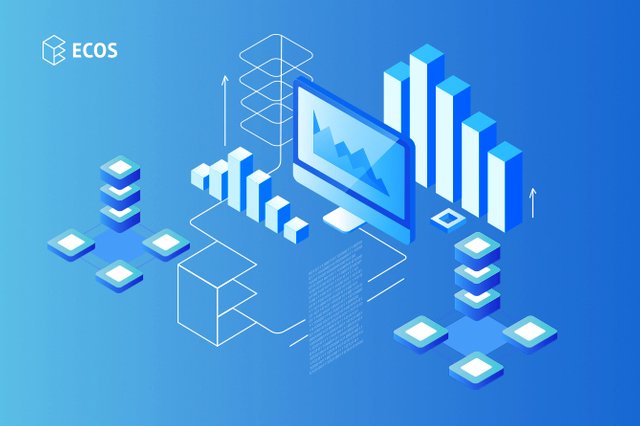
Decentralized ecosystems
For the new design paradigm, a traditional way of thinking about differentiation and business model design will no longer be adequate. The digital business ecosystems work differently.
In any marketplace, all participants have to be connected. Today this is achieved through a hub and spoke model. Industries and businesses exist in their own silos, and then rely on some sort of market platform to come together and do business.
Google and Amazon are obvious examples of such platforms whose business model is to integrate market participants and facilitate transactions. That has proven very useful, but having a proprietary market platform also adds cost and friction. More importantly, these platforms also disintermediate the customer interface, transferring the customer relationship from the business providing the product or service to the owner of the platform.
With blockchain we can build new kinds of market platforms that are collectively owned by the participants.
It is not centralistic customer-supplier networks in the classical sense that are oriented towards a company, or serve a linear customer experience chain. Digital business ecosystems often have no center and many partners act equally in the network. Companies that have already successfully designed business ecosystems, are generally strongly focused on the user/customer.
The goal of such a system is for the business ecosystem partners to create value through a coordinated value system that is accepted by all. Together, they can define cross-industry offers. In the end, the ecosystem should deliver the maximum benefit for all partners, mostly supported by new technologies, such as blockchain.
The user/customer is also central here, benefiting from the simplicity and positive experience of the coordinated range of services. Well-known digital ecosystem designs from the last decade come from companies like WeChat, Amazon or Apple.
Cross-enterprise workflow engine
By adding smart contracts to the mix, we can build a cross-enterprise workflow engine, moving business logic out of the enterprise and into the collective ecosystem layer. This would allow market participants to easily codify market rules as well as individual partner agreements in a way that is transparent, trustworthy and easily enforceable.
Such platforms, which exhibit a high degree of automation, are highly efficient. Without intermediaries, they are also inexpensive to use. By getting rid of the need to build and maintain costly data and transaction silos, not to mention the APIs and reconciliation mechanisms required to connect these silos together, such platforms can be built more quickly and far less expensively than traditional ones. That can represent significant cost savings within the enterprise. Perhaps more importantly, once built such platforms can facilitate cross-selling, reduce acquisition costs and potentially radically increase the customer base.
As has been pointed out, moving to blockchain-based horizontal ecosystems can also have advantages within the enterprise by catalyzing the breaking down of value chains into their component parts. In place of the monolithic legacy systems businesses are used to, enterprises can then move to a microservices architecture built on the foundation of blockchain and smart contracts. That will let them develop lightweight, dynamic, easily scalable and more robust applications that they can plug into the ecosystem, and withdraw, as needed.
Redesigning future with blockchain
After capturing the main idea of what role blockchain can play in terms of connecting businesses one can start thinking about how soon one should adopt new blockchain business models.
When thinking about market pioneers it can be mentioned that blockchain initiatives are quite often again ecosystem initiatives: multiple companies and other stakeholders, when needed including start-ups. There is not much sense in having blockchains for a single organization, is there?
IDC doesn’t say that slower adopters will miss the boat. What it does say in the press release, which IDC posted to kick off its worldwide IT industry predictions for 2018 and the years after that, is that, quote “Early adopters will have the opportunity to establish very strong positions in the ecosystem, while slower adopters will not be entirely boxed out but should be exploring use cases”.
However, in the web conference it was mentioned that those organizations which are not participating in blockchains will be ‘at significant speed and cost disadvantages’ and that ‘early adopters have the opportunity to establish very strong positions’.
To sum up, in the case of the blockchain, it is not only a matter of mastering a new technology but also of rethinking our current market role, value streams, and existing business ecosystems. This is a complex system in which many elements have to be (re)designed.
Hi! I am a robot. I just upvoted you! I found similar content that readers might be interested in:
https://medium.com/@ECOS_am/the-future-of-blockchain-in-new-business-ecosystems-ec39b3dcbaf
Downvoting a post can decrease pending rewards and make it less visible. Common reasons:
Submit